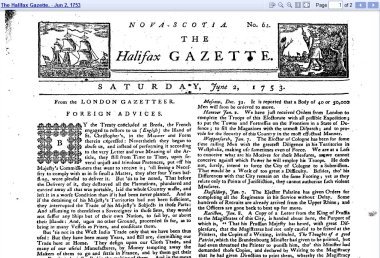 “If you look very closely, the small-town newspaper’s business model does and always has resembled a miniature version of the direction the big-city papers will eventually reach.”
“If you look very closely, the small-town newspaper’s business model does and always has resembled a miniature version of the direction the big-city papers will eventually reach.”
That’s one of several gems in this splendidly written essay by ME Sprengelmeyer (right), a former Washington correspondent for the Rocky Mountain News and now the proud publisher and editor of the Guadalupe County Communicator, “the sixth-smallest weekly in the 36th most populous state.”
Writing on the blog of John Temple, former editor and publisher of the Rocky, Sprengelmeyer explains how his 18-month track across the US chasing the presidential candidates had the secondary objective of helping him find a new home in small-town journalism.
What he found was a century-old model that looks much like the future of big market dailies. ” They have tiny staffs – only what the day-to-day cash flow can sustain. They aren’t afraid of reader-generated content. They outsource many functions, such as printing and distribution…they keep their communities addicted to the print product because they…do not give away a whole lot of material for free.”
Most don’t make much money — in fact, some lose money — but that’s usually because they aren’t particularly well run. Big media organizations don’t bother with small markets and even if they cared, the cost of opening bureaus in thousands of small towns would cripple them.
Sprengelmeyerwrites about the “caravan of great journalists” who showed up to help him relaunch his paper. They spent the weekend strategizing, mapping the local area and redesigning the product. Then they left. “I cried some more,” Sprengelmeyer writes, “because then I was alone again, facing my first week on the job with the scariest boss in the world: myself.”
The account is an inspiring story of personal discovery and reinvention. It may make you cry, too.
The Times Regrets All the Errors
The New York Times published a jaw-dropping correction from its July 17 “appraisal” of Walter Cronkite’s career. Among the eight errors in the story where Wikipediable factoids such as the date of Martin Luther King Jr.’s assassination. Ombudsman Clark Hoyt files an explanation with this blunt assessment: “A television critic with a history of errors wrote hastily and failed to double-check her work…editors who should have been vigilant were not.” The critic, Alessandra Stanley, is apparently much admired for her intellectual coverage of television, but is so careless with facts that in 2005, “she was assigned a single copy editor responsible for checking her facts.” Those were the days…
According to Columbia Journalism Review, Stanley’s latest miscues have vaulted her into the top five most corrected journalists on the Times staff again and guaranteed her more special attention. Hoyt’s play-by-play is a fascinating glimpse into the operations of a journalistic institution and the mishaps that can bedevil even the most rigorous quality process.
It’s also a commentary upon editors’ willingness to overlook screw-ups because of perceived countervailing virtues. Be sure to read Mark Potts’ remarks upon the Times incident, in which he relates a few war stories of careless reporters he’s known. “I edited a reporter who had little or no concept of how to use commas; another who would submit long stories with gaps labeled ‘insert transitions here;’ and a third who infamously spelled a type of citrus fruit as ‘greatfruit,’” he writes. His account will make you alternately laugh and groan.
Daylife Draws Big-Media Attention
The New York Observer profiles Daylife, a startup that is partnering with media companies — and increasingly with commercial clients — to build cells of thematic content. With a small staff of 26, the New York City-based venture has already signed up the Washington Post, NPR and USA Today as clients. It takes a different approach to reporting the news. Editors are skilled not only at identifying important stories but also assembling webpages on the fly that combine all sorts of widgetized information.
The big difference between the Daylife approach and that of conventional media, explains founder Upendra Shardanand, is that Daylife assumes that news is a living and evolving organism, not a shrink-wrapped package. Investors include the odd pairing of The New York Times and Craig Newmark, whose Craigslist is considered the great Satan by many in the newspaper industry. Headlined “The Aggregator That Newspapers Like,” the story merits at least a quick read from publishers seeking reinvention, because these guys are doing something right.
Miscellany
Newspaper websites attracted more than 70 million visitors in June, who collectively spent 2.7 billion minutes browsing 3.5 billion pages, according to the Newspaper Association of America (NAA). The figures are part of a new measurement methodology developed by Nielsen that measures a larger sample size and reports more granular information, according to an NAA press release.
The trade group has been on a campaign recently to stress the value of newspaper advertising. It released a report last month showing that six in 10 US adults use newspapers to help make purchase decisions and that newspaper ads are more valuable than ads in any other medium.
The NAA’s timing may not be so great. Online ad spending declined 5% in the second quarter and the situation isn’t expected to improve much until the middle of next year, according to two reports released today. In the US, the rate of decline was 7%, or slightly above the global average. Classified ads fell 17% and display ads were down 12%. A J.P. Morgan report issued this morning said that search advertising, which has been one of the few bright spots in the market over the last year, dropped 2% in the second quarter, mainly due to poor results at Yahoo and AOL. Results were also dragged down by a 31% decline in ad sales at Monster.com.
Google has quietly quadrupled the number of articles in its News Archive Search service. The oldest newspaper digitized to date is this June 2, 1753 edition of the Halifax Gazette. Google hopes to make money by selling targeted advertising against the archives, a market that has traditionally been the source of some revenue for publishers themselves.
Two groups of former Los Angeles Times journalists have organized themselves into contract editorial groups selling journalism and photography. They’re called the Journalism Shop and Pro Photography Network.
The Boston Globe is said to be considering an option to become a nonprofit organization as a way to bail itself out of its current financial woes. Columnist Howie Carr of the rival Herald pens this vicious satire of the idea, calling his crosstown rivals “the bowtied bumkissers.” If you’re a disciple of editorial savagery, there is no more skilled practitioner than Carr.
The Fresno Bee will begin charging 29 cents a week for its TV supplement.
If you like the Amazon Kindle, you’re going to want to keep an eye on a new product from Britain’s Plastic Logic, which is due to launch early next year. The razor-thin reader will reportedly sell for around $300 and will have a flexible screen that makes it easy to carry. It’s also larger than the Kindle, which should warm the hearts of newspaper executives who don’t want to give up their broadsheet format. Here’s a video:





